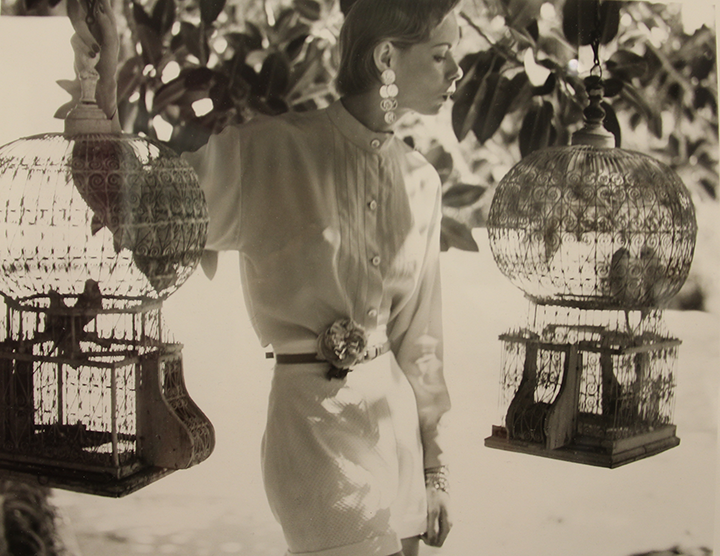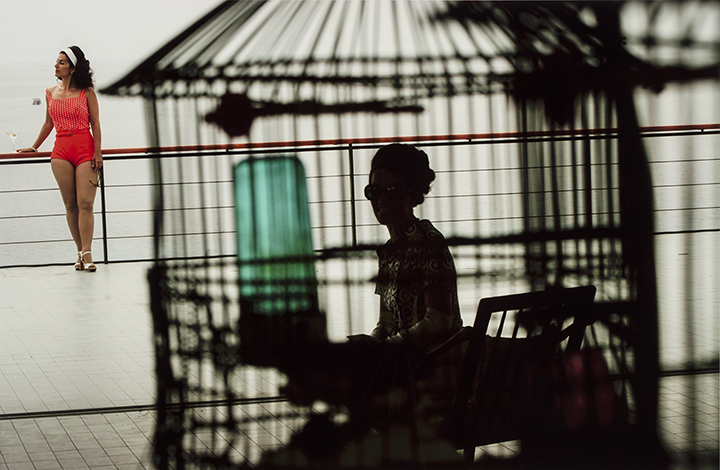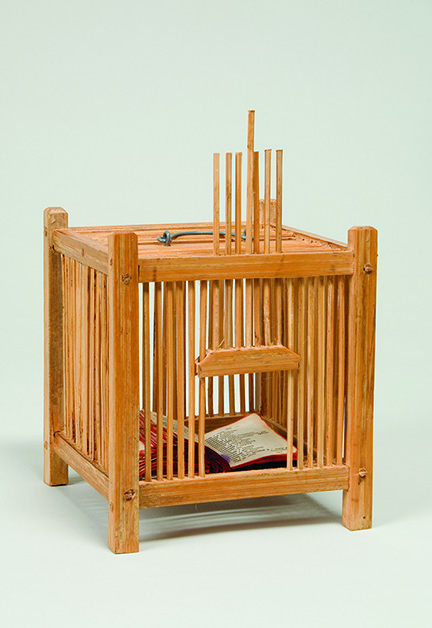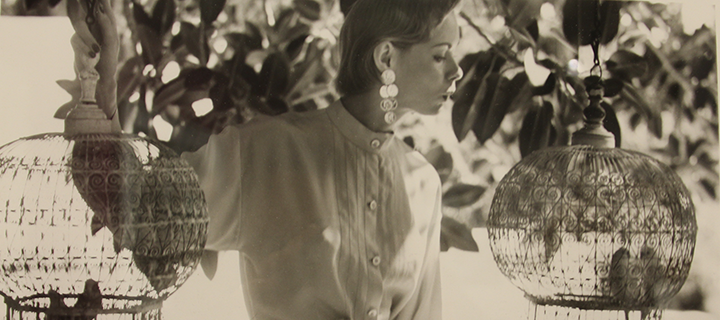In NMWA’s recent collection rotation, there are three works newly on view that reference cages. While the meaning of the cage changes slightly from piece to piece, each tableau offers insight into how artists of different mediums and time periods engage with themes of freedom and confinement.
The earliest work is by Louise Dahl-Wolfe (1895–1989), an American fashion photographer active in the mid-20th century. She worked for the popular magazine Harper’s Bazaar, and is known for the sense of naturalism she brought to the industry.

In her photograph Natalie with Birdcages (1950), the belted silhouette of the model echoes that of the two hanging cages, creating a harmonious composition in which the model appears at one with her surroundings. This mimicry emphasizes the naturalism of the model and the “wearability” of the clothing, a technique that Dahl-Wolfe used in other photographs like this one. Contemporary critics have praised the photographer for “replac[ing] the image of the glamorous goddess in the gilded cage with an approachable, active woman with a sense of self”—a sentiment apt for this image of a woman positioned outside of a cage, existing freely and at ease in the world.
In contrast to Dahl-Wolfe’s liberating image, a photographic still by Eve Sussman (b. 1961), Themis in the Bird Cage (2006), explores the power dynamics between men and women. It comes from her dialogue-free film The Rape of the Sabine Women (2007), which is based on an ancient myth narrating the abduction of several women who are forced to repopulate Rome. Rampant with sentiments of twisted patriotism and sacrifice, the narrative has been depicted often by male artists including David, Rubens, Poussin, and Picasso. Sussman offers a new perspective by setting her version in the 1960s, an era of supposed sexual liberation.

The scene takes place at a posh pool party, during which we are afforded a glimpse of the now-married abductees in their new lives. This still evokes a sense of female disempowerment by portraying one woman as caged prey—a “trophy wife” in the most literal of senses. The brightly clad woman in the background initially offers a sense of freedom and lightness; though the narrative context makes it clear that she is no freer than her shadowy counterpart, as both are imprisoned in forced marriages.

Of her film, Sussman once commented that the “linguistic breakdown brings you back to…the core of what it means to communicate on film.” This offers a parallel to a third cage-themed work: Book in a Cage (1981), by Elisabetta Gut (b. 1934). The Italian book artist created this assemblage from of a found wooden cage and an Italian–English pocket dictionary. Not a birdcage but a “wordcage,” the piece comments on the ability of language to be both restrictive and freeing. While we can be hindered by our inability to communicate across language divides, we have freedom in our ability to use language at all. Symbolically, the cage serves to emphasize language’s constraints, while the open door reminds viewers of its endless possibilities.
